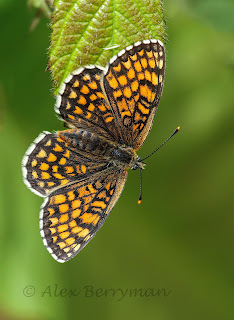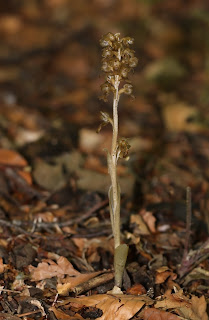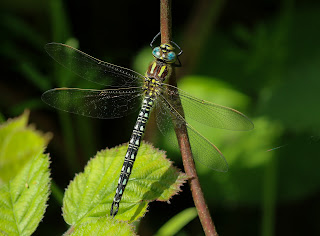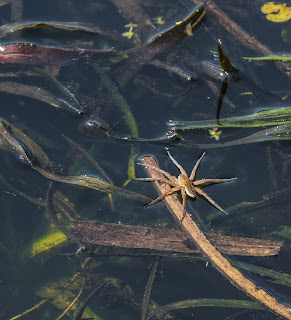2 visits to new areas of Thursley Common away from the popular Moat Car Park. Effort was concentrated towards the southern end, where mosaic-style management seems to be a lot more prominent and consequently the area is a lot more biodiverse.
Dartford Warbler, Woodlark, Tree Pipit &
Redstart are all in good numbers, the latter appearing to have had a particularly good year.
Silver-studded Blues are thinly distributed with the exception of one dense population on the western edge. A ~50m transect yielded 48. Numbers of
Bombus lucorum across the site are very impressive along with smaller numbers of
hypnorum &
terrestris.
 |
| Bombus lucorum (M) |
 |
| Silver-studded Blue |
Ammophila wasps were abundant and consequently one lone Mottled Bee-fly (
Thyridanthrax fenestratus) was found on my latter visit.
 |
| Mottled Bee-fly ~ Thyridanthrax fenestratus |
A trip to Hankley Common Golf Course on the 20th June was notable for 1 Mottled Bee-fly but most impressively for
Textrix denticulata, seemingly a first for Surrey and a very rare sighting in the SE of England.





















